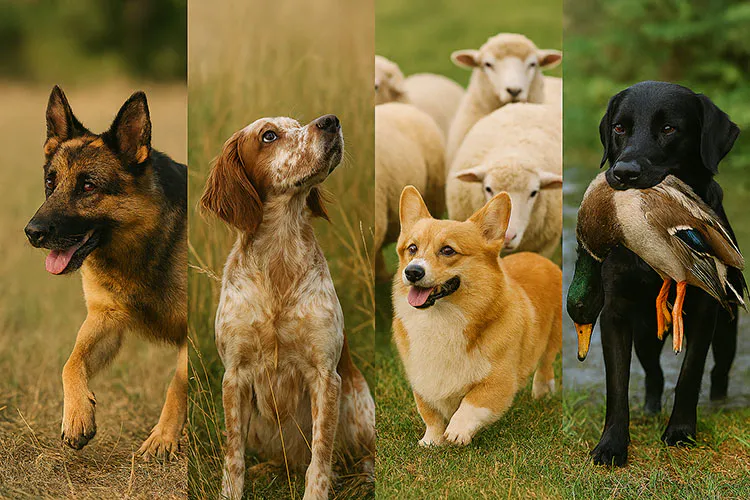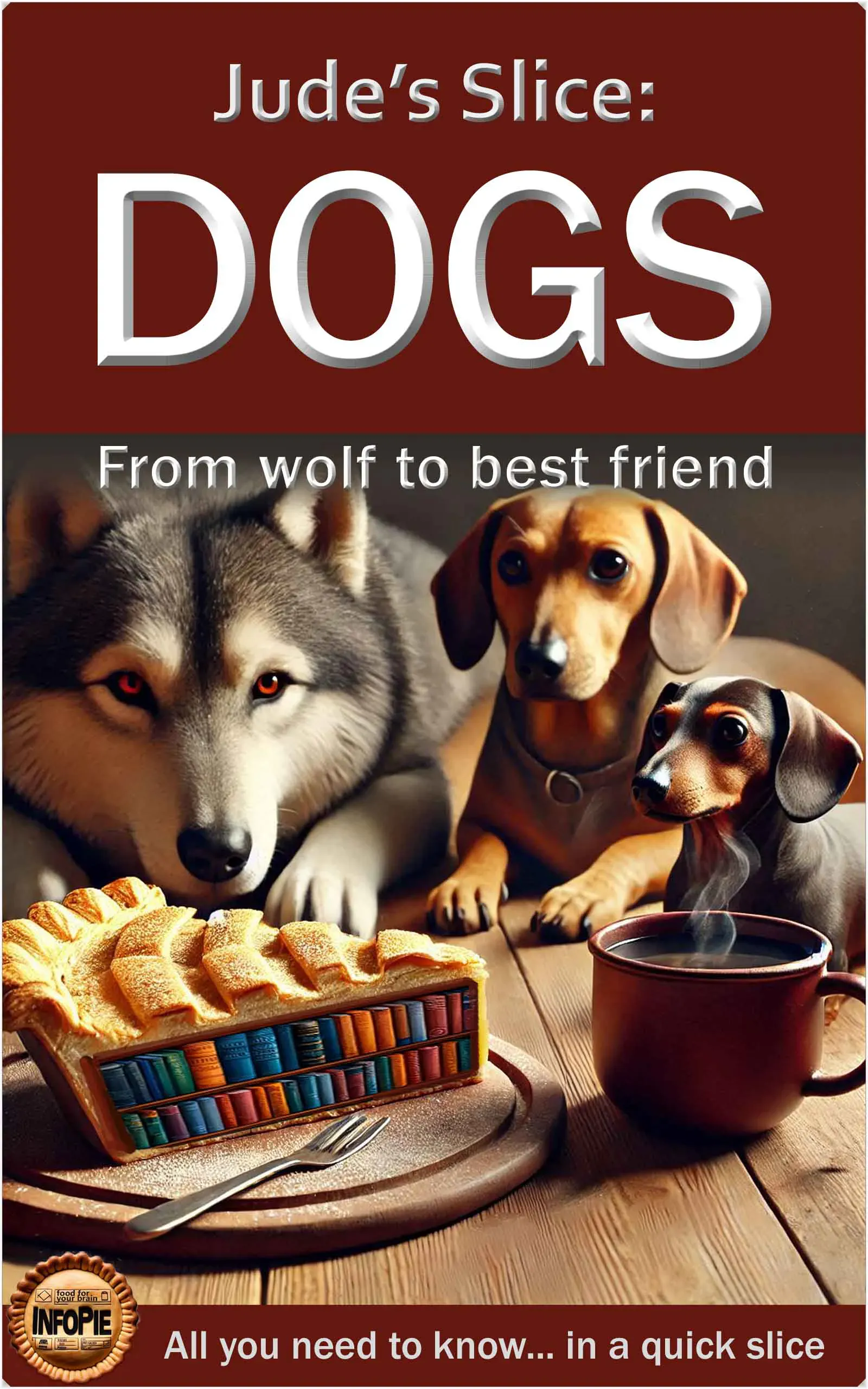
Following the initial domestication process, the diversification of dog types began to accelerate around 5,000 or 6,000 years ago.
As dogs encountered different environments and became an integral part of human societies, they entered a new stage of development, with certain changes arising thanks to natural and human selection:
Behaviours: reduced aggression and fear towards humans, enhanced ability to read human social cues, development of bark diversity as a form of communication with humans.
Cognitive abilities: enhanced trainability and responsiveness to human commands, and advanced social cognitive abilities.
Size: from small dogs used for vermin control to large dogs used for hunting and guarding.
Coat: from the thick coats and stocky bodies of breeds in cold climates to the short coats and thinner builds of desert dogs.
Skull shape: such as elongated snouts in scent hounds to accommodate more scent receptors.
Hunting style: scent hounds, sight hounds, retrievers and pointers.
Herding: strong instinct to round up livestock without attacking.
Guarding: strong instinct to protect.
Digestive adaptation: enhanced ability to digest starch in agricultural societies.
Companionship: tameness and dependency, but also emphasis on aesthetic traits that humans find appealing (such as neoteny – which is the retention of juvenile characteristics. This partly explains the appeal of smaller breeds and ones that people find cute).
However, these changes didn’t come from the type of deliberate breeding programmes we have today; much of the selection would have been unconscious, with dogs that were better adapted to life with humans simply being more successful at survival and reproduction in certain environments.
A seemingly trivial but clearly beneficial example of this is that dogs have naturally evolved specific muscles that allow them to raise their eyebrows, and it seems to be only for the purpose of better communicating with humans.
For this reason, early dogs were not standardised in the modern sense of breeds but evolved into recognisably distinct types known as landraces.
Landraces arise naturally in domesticated plant or animal species through adaptation to the environment and in isolation from other populations (otherwise they would continue mixing), while breeds are controlled to have standardised characteristics, such as appearance or behaviour, that differentiate them from the rest of the species. So, we can see that the early dogs split naturally into landraces, according to their environment, while dog breeds only arose thanks to deliberate efforts in the 19th century to standardise them, which we’ll look at later.
Before we do, though, we need to recognise a big problem with the history of dog breeds. Because of repeated interbreeding between different landraces and breeds of dogs, and even with wolves, their lineage is messy, to say the least. It’s very difficult, and in some cases impossible, to trace breed lineage with any certainty beyond a couple of hundred years, which means the claimed antiquity of many breeds is refuted by genetic evidence. Unfortunately, this fact seems to be frequently overlooked or ignored, presumably because it undermines the ‘noble’ view of lineage or pedigree… especially when a breed has been recently recreated.
Irish Wolfhounds are a good example. They were a very old landrace used to hunt wolves, but wolves were exterminated in Ireland in the late 1700s, after which there was almost no demand for Wolfhounds and, by 1840, they were almost certainly extinct. George Augustus Graham recreated them in the 1860s by breeding Scottish Deerhounds with Borzois and Great Danes (and possibly one of the last Wolfhounds, although this is disputed). So now we have a dog breed that looks like the original but is entirely new and genetically distinct from the original.
In a perfect example of the circularity of dog breeds, the modern Great Dane is partially derived from the Irish Wolfhound, which is partially derived from Great Danes. I told you it was messy.
And it’s not just Wolfhounds. Many original breeds have become extinct, and the two World Wars saw the extinction or near-extinction of many more, so a lot of the ‘old’ breeds we now know are relatively young breeds or extinct breeds that have been recreated or revived in the 19th and 20th centuries. The Greyhound, for example, has been known about and depicted in art for over 6,000 years, but the breed has been recreated several times – there are over 40 varieties of Greyhound around the world today, all of unknown origin and all genetically modern!
Because of this, scientists and some organisations now prefer to categorise modern breeds and basal breeds, rather than ancient ones. There are 16 basal breeds: Afghan Hound, Akita, Alaskan Malamute, American Eskimo Dog, Basenji, Canaan Dog, Chow Chow, Dingo, Eurasier, Finnish Spitz, New Guinea Singing Dog, Saluki, Samoyed, Shar Pei, Shiba Inu and Siberian Husky.
However, it’s important to understand that this only means these breeds’ genes are less influenced by other mixes. It does not mean that they’re old. The Eurasier, for example, was developed in the 1960s by mixing Chow Chows with Keeshonds (aka Wolfspitz, Dutch Barge Dog, German Spitz) and a single Samoyed, but it is considered a basal breed because the genetic legacy of Chow Chows and Samoyeds predates the age of modern breeding.
This age of modern breeding began with the establishment of kennel clubs in the late 19th century and marks the dividing line between ancient or basal breeds and modern ones.



